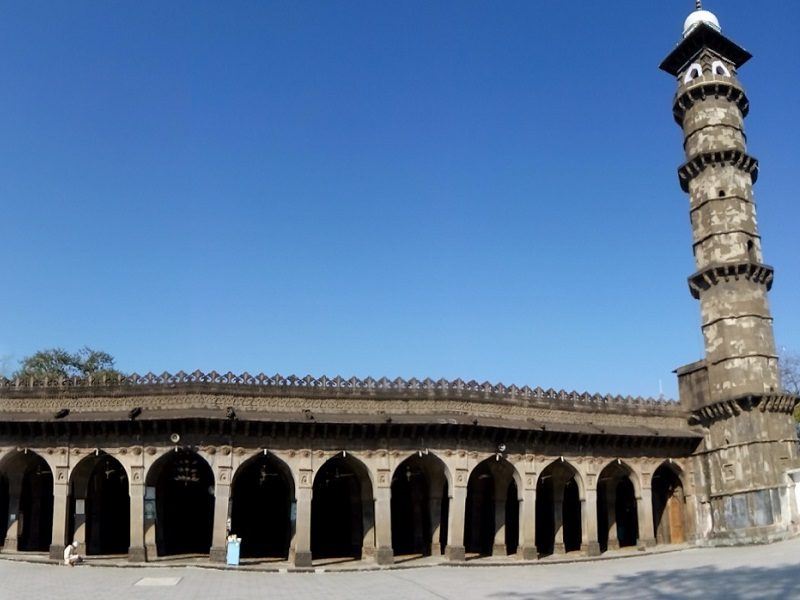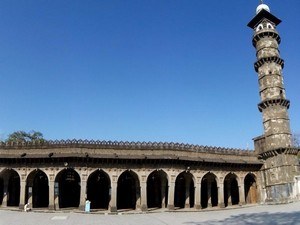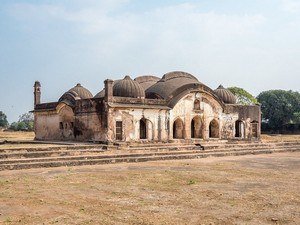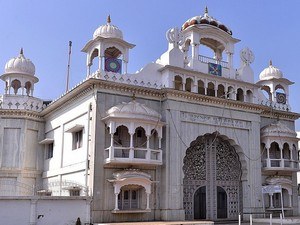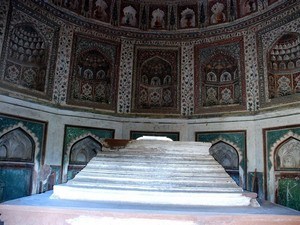Jama Masjid, Burhanpur - Timings, History, Architecture, Best Time to Visit
 #2 of 14 Places to Visit in Burhanpur
#2 of 14 Places to Visit in Burhanpur
 Distance (From Burhanpur Railway Station): 5 Kms
Distance (From Burhanpur Railway Station): 5 Kms
 Trip Duration (Including Travel): 30 Mins - 1 Hr
Trip Duration (Including Travel): 30 Mins - 1 Hr
 Place Location: Near Gandhi Chowk
Place Location: Near Gandhi Chowk
 Transportation Options: Cab / Auto
Transportation Options: Cab / Auto
 Travel Tips: None
Travel Tips: None
At a distance of 5 km from Burhanpur Railway Station, Jama Masjid is a religious place located in Burhanpur, Madhya Pradesh. Situated near Gandhi Chowk in the heart of the city, it is one of the well-preserved places of heritage in Madhya Pradesh, and among the best Burhanpur places to visit.
Jama Masjid is one of the major mosques built during the Faroqui rule in the city of Burhanpur. The initial Jama Masjid was built by Azam Humayun in 1421 CE to the north of the city at Etwara and was called the Bibi Ki Masjid. But soon with the growth of the city, ruler Adil Shah built the present Jama Masjid in the center of the town. The construction of the Jama Masjid was started in 1590 and completed 5 years later.
Built-in Islamic architecture, the mosque is a roofless mosque but the intersecting symmetrical arches create the ceiling. The facade has 15 arches and is flanked by two minarets that are 36m in height that rise majestically across the Burhanpur skyline. The mosque was built using 'black stone' brought from Mandu, hence it is also called Kali Masjid. There are 17 Mihrab niches in the mosque facing the direction of Mecca. One of the Mihrabs holds an Arabic inscription that mentions the patron in Arabic along with verses of the Quran that cite the year of construction. The calligrapher, Mustafa's name is also seen inscribed. Also, there is a small pond within the premises.
The most striking part of the Jama Masjid in Burhanpur is the south end of the prayer hall, where there are bilingual inscriptions that mention the astronomical position, date, and year according to the Hindu Samvat calendar. The Jama Masjid of Burhanpur is the only mosque in India with bilingual inscriptions in Sanskrit and Arabic! Moreover, a little note in Persian by Akbar is also found on one of the walls. Akbar added the writing in 1601 on his arrival to Burhanpur via Allahabad and his return to Lahore. It was calligraphed by Mohammad Masoom after the conquest of hill fort Asirgarh.
Timings: 5 AM - 9 PM
Entry: Free



